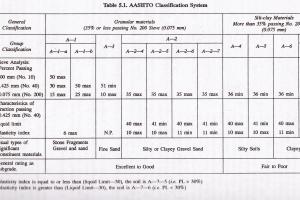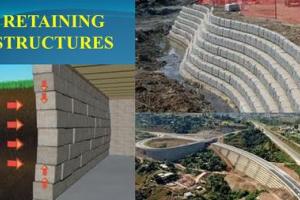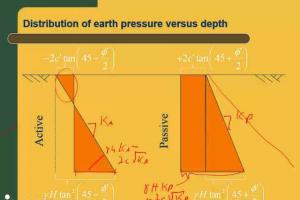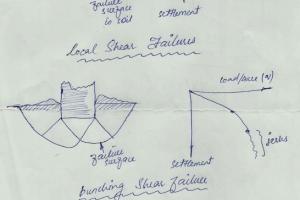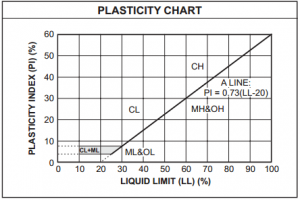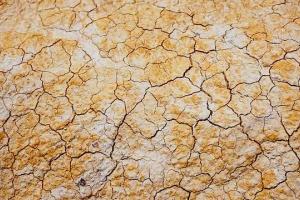Laws of Soil Mechanics

Soil mechanics is a branch of engineering that deals with the behavior and properties of soil, as well as its interaction with structures and foundations. There are several laws and principles that govern the behavior of soils. Here are some fundamental laws of soil mechanics:
Hazen's Law
One of the most important uses for geotextiles is as a filter in drainage and erosion control applications. Drainage examples include trench and French drains, interceptor drains, blanket drains, pavement edge drains, and structural drains, to name just a few. Permanent erosion control applications include coastal and lakeshore revetments, stream and canal banks, cut and fill slope protection, and scour protection. In all these applications, geotextiles are used to replace graded granular filters used in conjunction with the drainage aggregate, perforated pipe, rip rap, and so on.
When properly designed, geotextiles can provide comparable performance at less cost, provide consistent filtration characteristics, and they are easier and therefore cheaper to install. Although erosion control technically does not improve the soil, prevention of both external and internal erosion in residual and structured soils is an important design consideration. Geotextiles can also be used to temporarily control and minimize erosion or transport of sediment from unprotected construction sites.
In some cases, geotextiles provide temporary protection after seeding and mulching but before vegetative ground cover can be established. Geotextiles may also be used as armor materials in diversion ditches and at the ends of culverts to prevent erosion. Probably the most common application is for silt fences, which are a substitute for hay bales or brush piles, to remove suspended particles from sediment-laden runoff water.
Poisuelli's Law
Poiseuille's Law, named after the French physicist Jean-Louis-Marie Poiseuille, relates the flow rate of a viscous fluid through a cylindrical pipe to the pressure difference across the pipe and the properties of the fluid and the pipe. It is applicable to laminar flow (smooth, orderly flow) in a long, straight pipe. The law can be expressed as Q = (πr^4ΔP) / (8μL), where Q is the volumetric flow rate, r is the radius of the pipe, ΔP is the pressure difference, μ is the dynamic viscosity of the fluid, and L is the length of the pipe.
Stoke's Law
Stokes' Law, formulated by the British physicist Sir George Gabriel Stokes, describes the drag force experienced by small spherical particles moving through a viscous fluid at low Reynolds numbers. It applies to the settling of particles in a fluid under the influence of gravity. According to Stokes' Law, the drag force (F) acting on a particle is proportional to its velocity (v), the dynamic viscosity of the fluid (μ), and the particle's radius (r). Mathematically, it can be expressed as F = 6πμrv.
Coulomb's Law of Shear Strength:
This law describes the relationship between the shear stress and the normal stress on a soil failure plane. It states that the shear strength of soil is proportional to the normal stress acting on the failure plane, and it can be expressed as τ = c + σtan(φ), where τ is the shear stress, σ is the normal stress, c is the cohesion intercept, and φ is the angle of internal friction.
Terzaghi's Principle of Effective Stress:
This principle states that the shear strength and compressibility of soil depend on the effective stress acting on the soil particles. Effective stress is the difference between the total stress (applied stress) and the pore water pressure within the soil. It is the effective stress that governs the deformation and strength characteristics of the soil.
Rankine's Earth Pressure Theory:
This theory is used to analyze the lateral pressure exerted by soil on retaining walls, bulkheads, and other structures. It provides a means of calculating the active and passive earth pressures acting on a structure. The theory assumes that soil has no cohesion and follows a failure surface called Rankine's failure wedge.
Boussinesq's Theory of Stress Distribution:
This theory is used to calculate the stress distribution in soil caused by a concentrated load acting on the surface. It provides a means to determine the stress at any point in a soil mass beneath the loaded area. The theory assumes that the soil is homogeneous, isotropic, and elastic.
Consolidation Theory:
Consolidation refers to the process of gradual settlement of soil under a sustained load due to the expulsion of pore water. Consolidation theory, developed by Karl Terzaghi, describes the settlement behavior of saturated cohesive soils. It relates the time-dependent settlement to the applied load, the soil properties, and the drainage conditions.
Mohr-Coulomb Failure Criterion:
This criterion is used to determine the failure of soil under combined stresses. It plots the principal stresses (normal stresses) and the corresponding shear stresses on a graph called Mohr's circle. The failure envelope is a straight line that represents the failure conditions of the soil.
These are some of the fundamental laws and theories in soil mechanics. They provide the basis for understanding and analyzing the behavior of soil under different loading and environmental conditions. Engineers and geotechnical professionals use these principles to design and analyze foundations, slopes, embankments, retaining structures, and other geotechnical systems.



